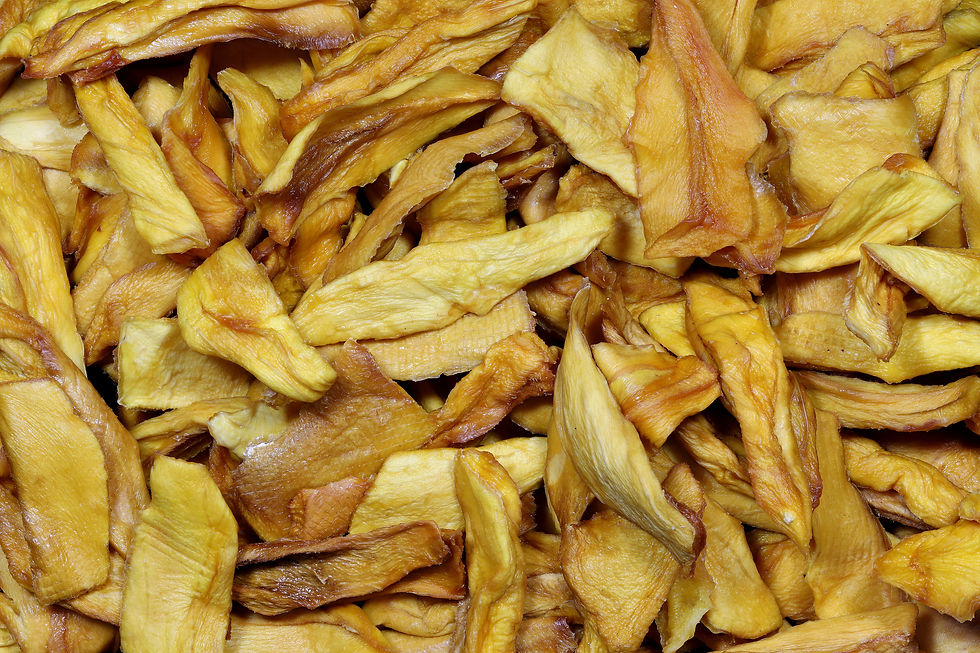
Mango
Dried mango, produced by dehydrating mango slices, provides a sweet tropical flavor with a chewy or slightly firm texture. Varieties like Haden, Ataulfo, and Kent contribute to its unique taste. Rich in vitamins A and C, as well as fiber, it is a globally enjoyed snack and culinary ingredient. Commonly originating from mango-producing regions like Southeast Asia, India, and South America, dried mango has a longer shelf life and is favored for its convenience and delightful tropical taste.
Origin
West-Africa, Mexico
Grades
Strips, half-strips, pieces, cheeks
Packaging
Vacuum bags in box
Tree
Reaching over 30 meters in height. Characterized by elliptical leaves and fragrant flowers, it produces the beloved mango fruit—a drupe with a single large seed and juicy flesh. Thriving in tropical climates, mango trees are cultivated for their cultural significance and culinary uses. Popular varieties include Alphonso, Haden, and Kent. Besides being a staple fruit, mango trees offer shade, timber, and play vital roles in various cultural practices.
Season
The dried mango season, aligns with the mango harvest season, typically from late spring to early autumn (April to September). During this period, fresh mangoes are abundant and processed into dried mangoes to extend shelf life. The exact timing varies based on specific regions and local climate conditions.
Usage
Used as snack
- Energy bars
- In nut and dried fruit mixes
- Trail mixes
Used as ingredient
- Granola and cereals